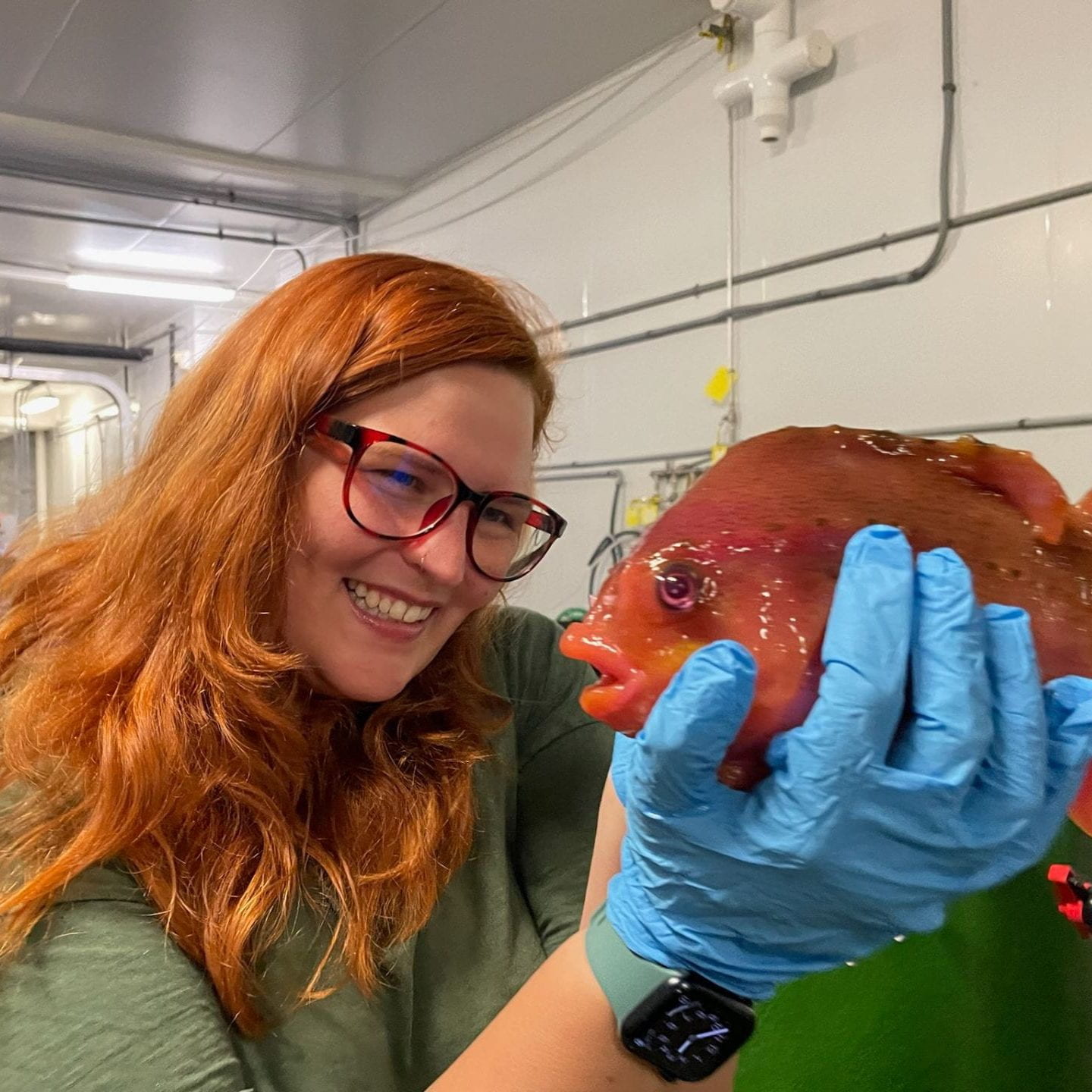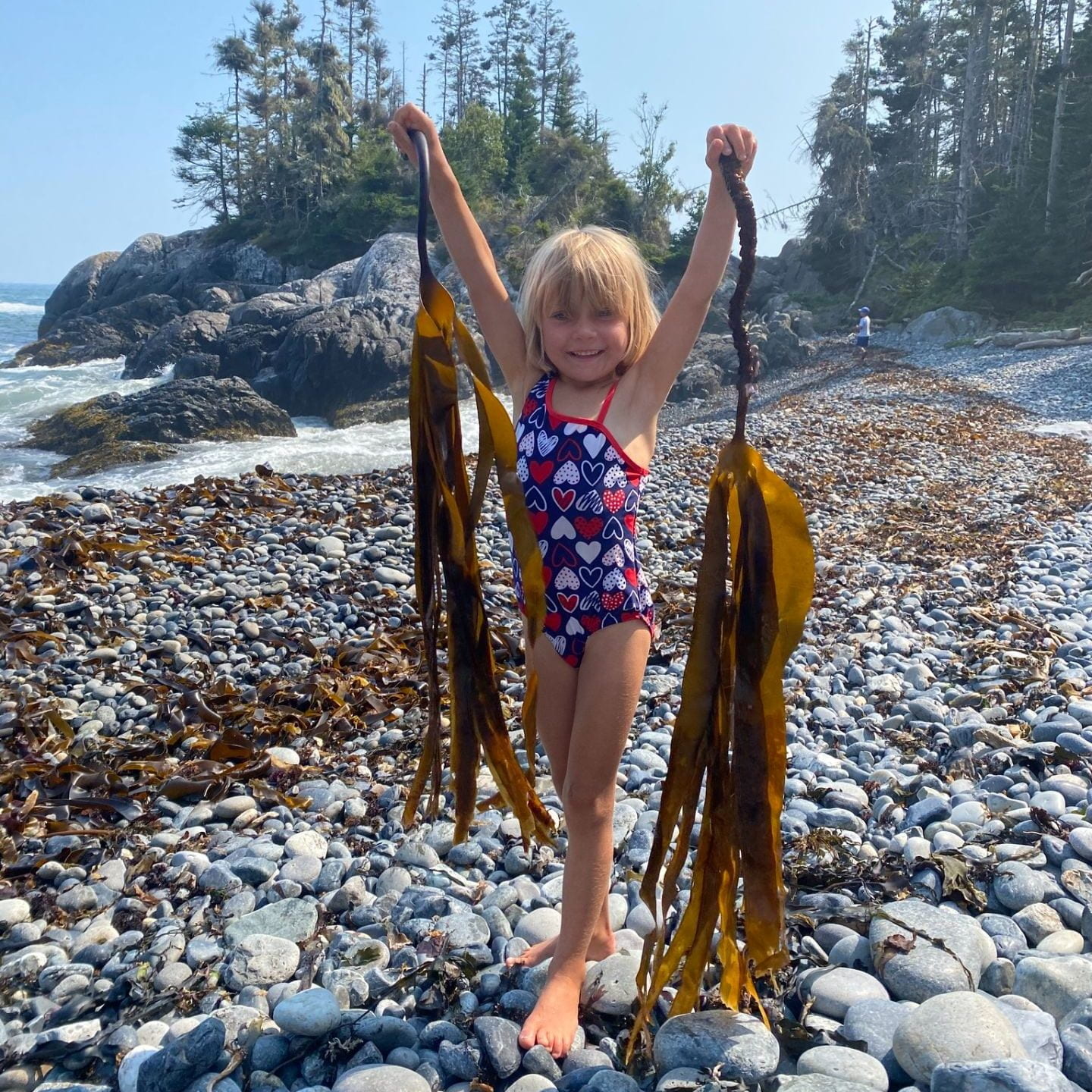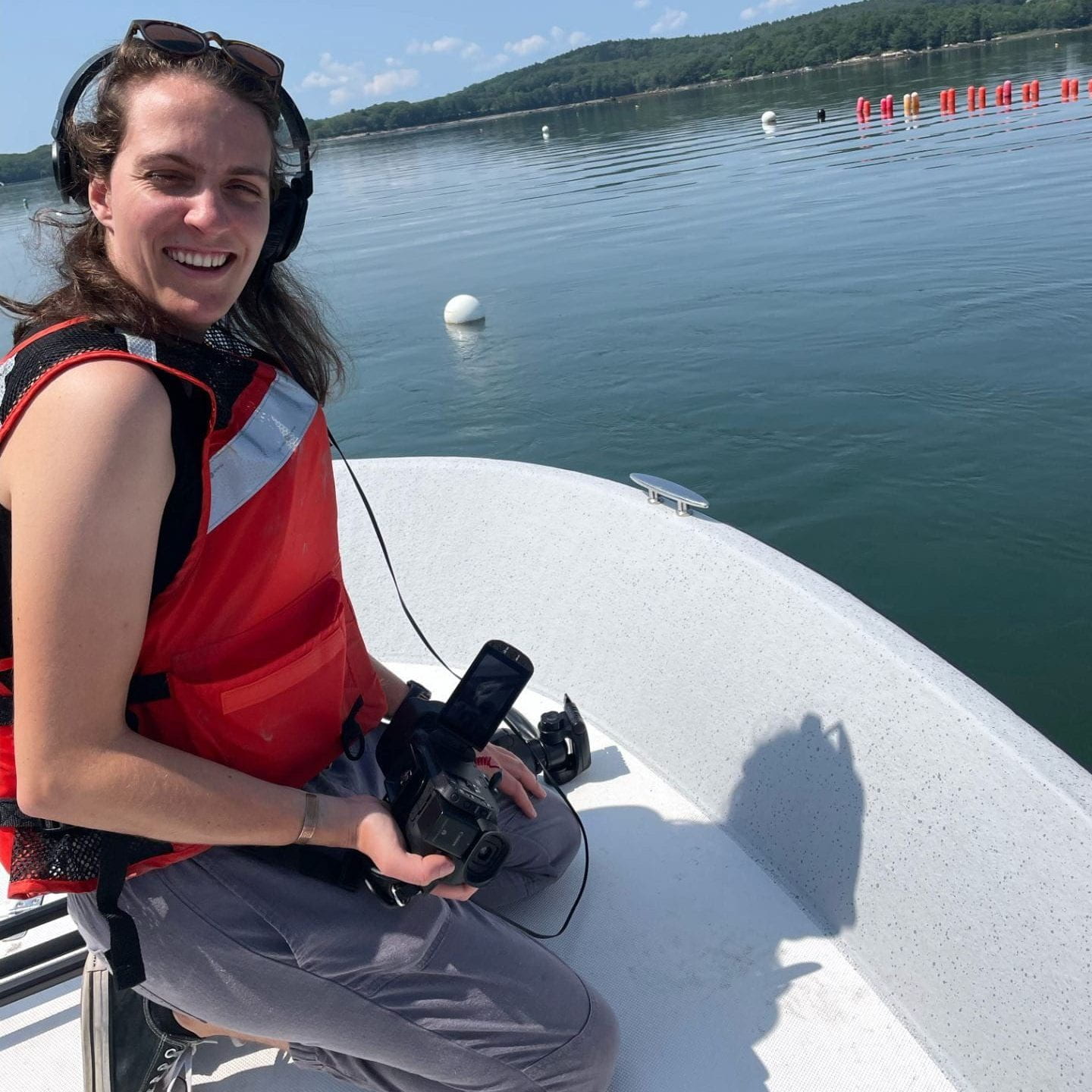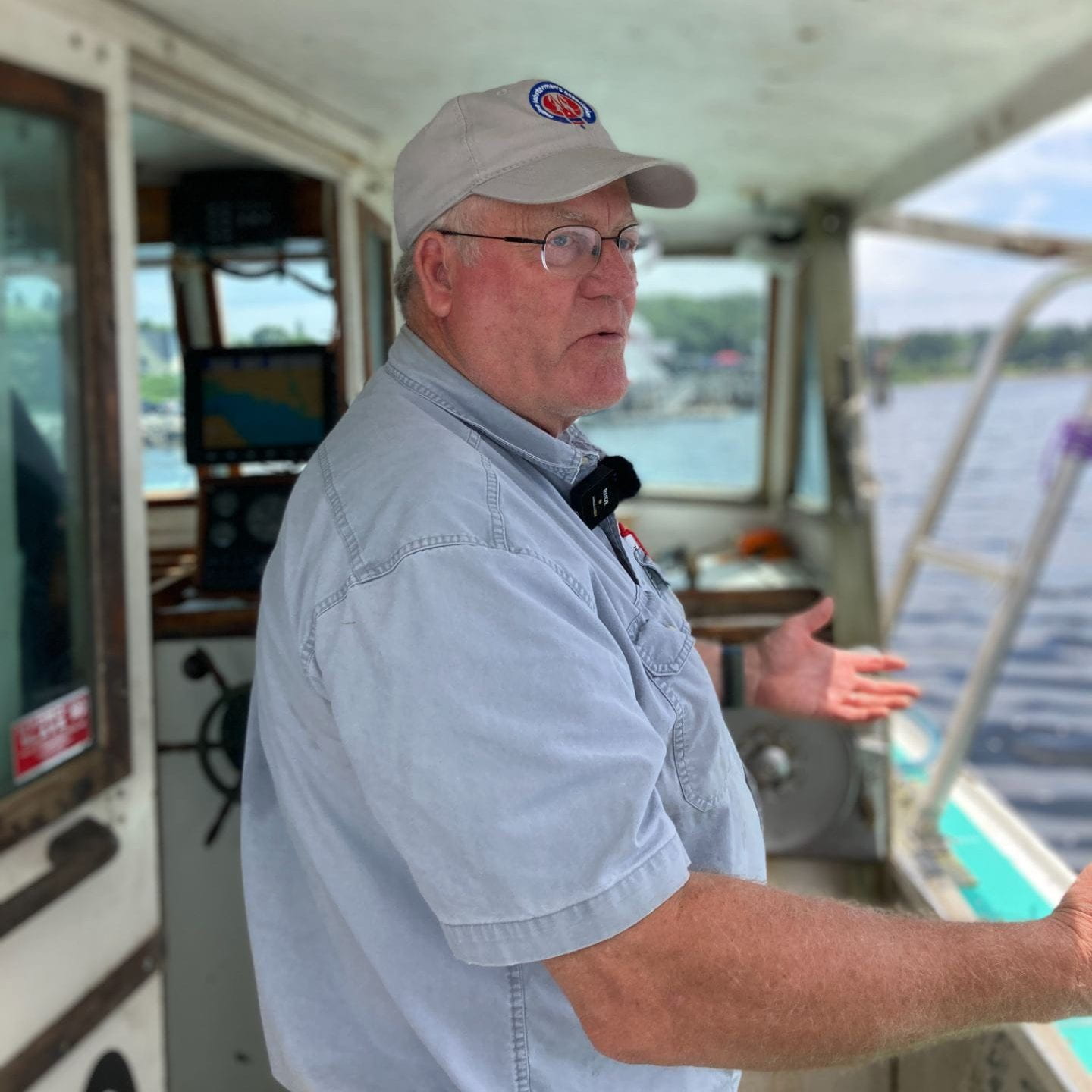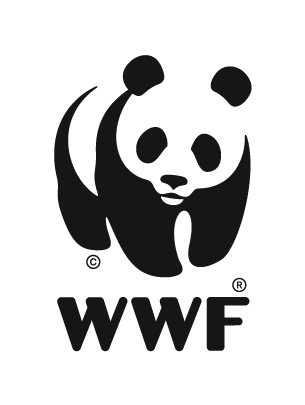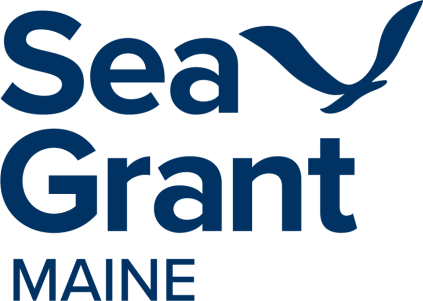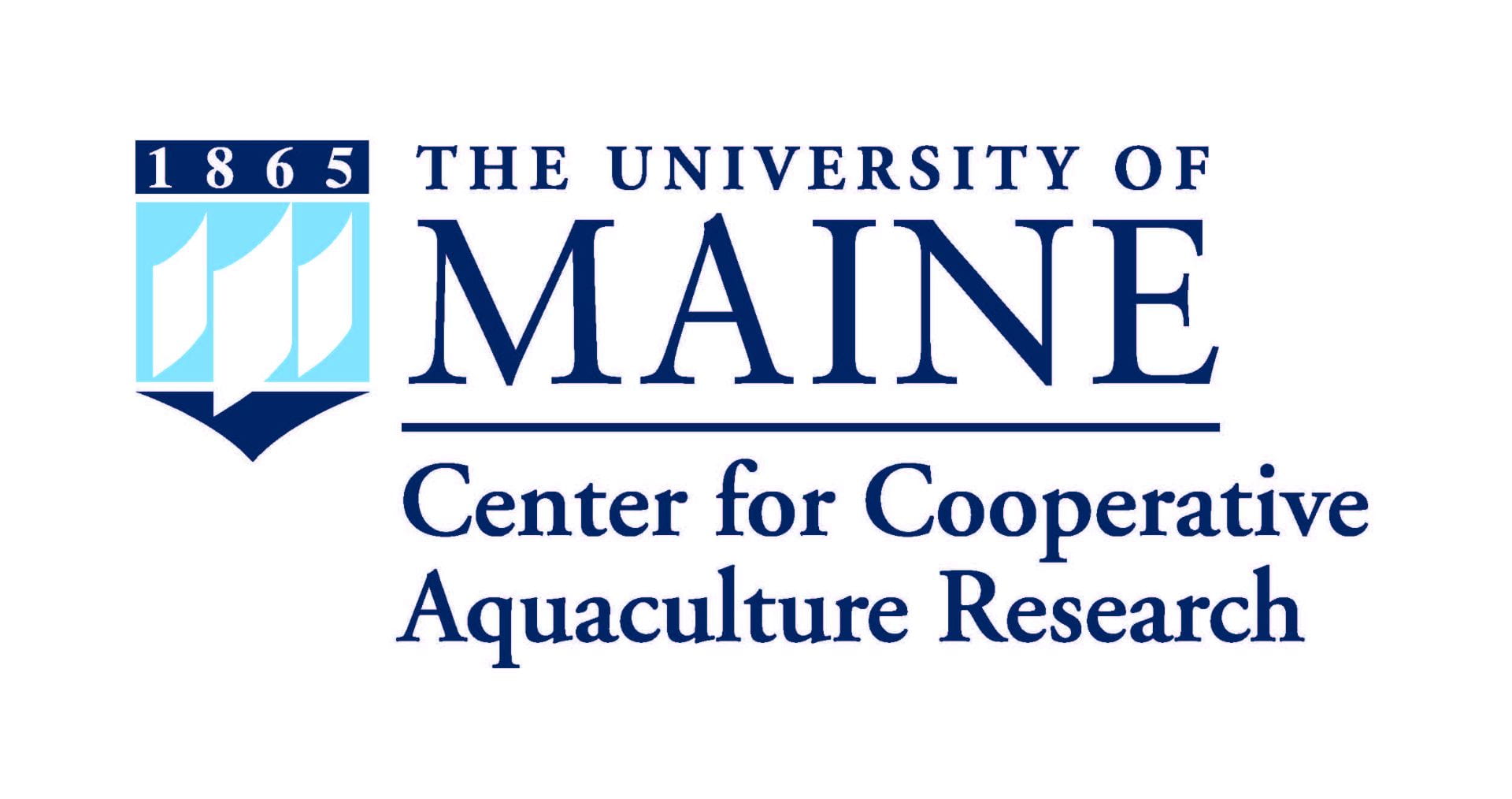‘Kelp’ us Expand Maine’s Place-based 5th-6th Curriculum!
Upcoming Education Opportunities
Registration Open for the Seaweed Educators’ Workshop 2.0!
Join us on Friday, October 4th, 2024 from 8:30 to 3:00 for the second Seaweed Educators’ Workshop! Learn about incorporating seaweed aquaculture, seaweed ecology, and seaweed’s role in cultures around the world into YOUR classroom.
This in-person workshop at the Belfast Boathouse, located at 34 Commercial Street in Belfast, offers hands-on, in-person activities designed to introduce educators to seaweed-themed teaching materials that pair with the book With a Little Kelp from Our Friends. This workshop is open to Maine educators, and priority is given to educators currently emplyed in k-12 schools, including classroom teachers, ed techs, and librarians.
Register today to reserve your spot!
Educate Maine With a Little Kelp from Our Friends!
Maine Aquaculture Innovation Center, in collaboration with The World Wildlife Fund, is on a mission to get educational resources about seaweed aquaculture into Maine’s elementary classrooms. During the summer and fall of 2023 we distributed 1000 copies of With a Little Kelp from Our Friends– a book on the secret life of seaweed written by Mathew Bate and illustrated by Liz Rowland– to educators across the state. The book is accompanied by teacher resources designed to increase literacy around seaweed aquaculture, which can be found on this webpage.
Some of the book’s important themes include:
- Seaweed farming and food security
- Seaweed biology and ecology
- History of seaweed use around the world
- Seaweed’s role in solutions for a changing climate
Teaching these ideas to kids during 5th and 6th grade will help them understand why seaweed aquaculture is important to Maine and how it can help…
- Stabilize our fishing community in the face of a changing climate and ocean
- Preserve working waterfronts
- Provide food with high nutritional value to our communities
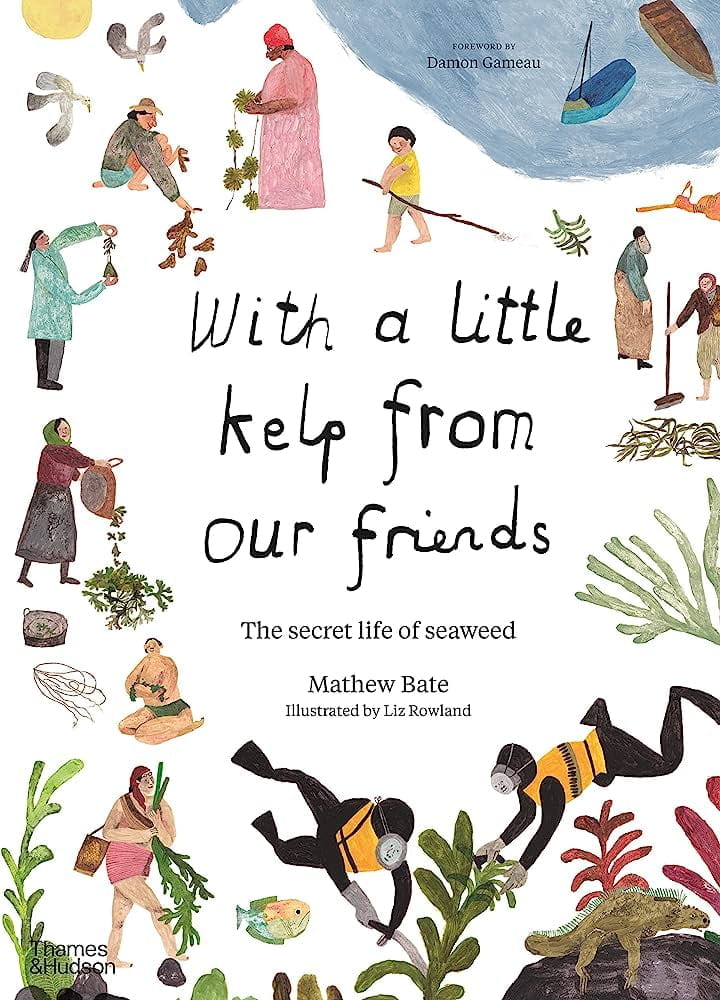
*Please note the importance of working on approved sites when growing kelp (or any aquaculture product) in the ocean. For the sake of biological security, social license for aquaculture in Maine, and your own legal protection, it is really important to only put things in the ocean with the appropriate permitting! If you plan to apply for your own lease, the information about lease types, regulations, and application process can be found on the Department of Marine Resources website at: https://www.maine.gov/dmr/aquaculture/applications-and-forms
Important Project Updates!
Seaweed Curriculum Resources Updates
We are currently finalizing and posting curriculum resources to this page! If you find/create additional seaweed activities for k-8 students that you would like to share with this educational community, please submit them using the form below!
Meet the author of With a Little Kelp from Our Friends!
WWF’s Pandas and Prose is a virtual series which features conversations with writers who use nature and the written word to inspire and educate readers around the world. In August 2024, WWF hosted a Pandas and Prose webinar with Mathew Bate, author, Maya Pelletier, special projects assistant at the Maine Aquaculture Innovation Center, Kristel Anuszewski, teacher at Windsor Elementary School, and Bailey Moritz, WWF’s lead specialist for seaweed and shellfish farming. Their conversation is guided by Mat’s book With a Little Kelp from Our Friends.
Number of Books Distributed (out of 1,000)
Photos from the Seaweed Educators' Workshop on November 3rd!
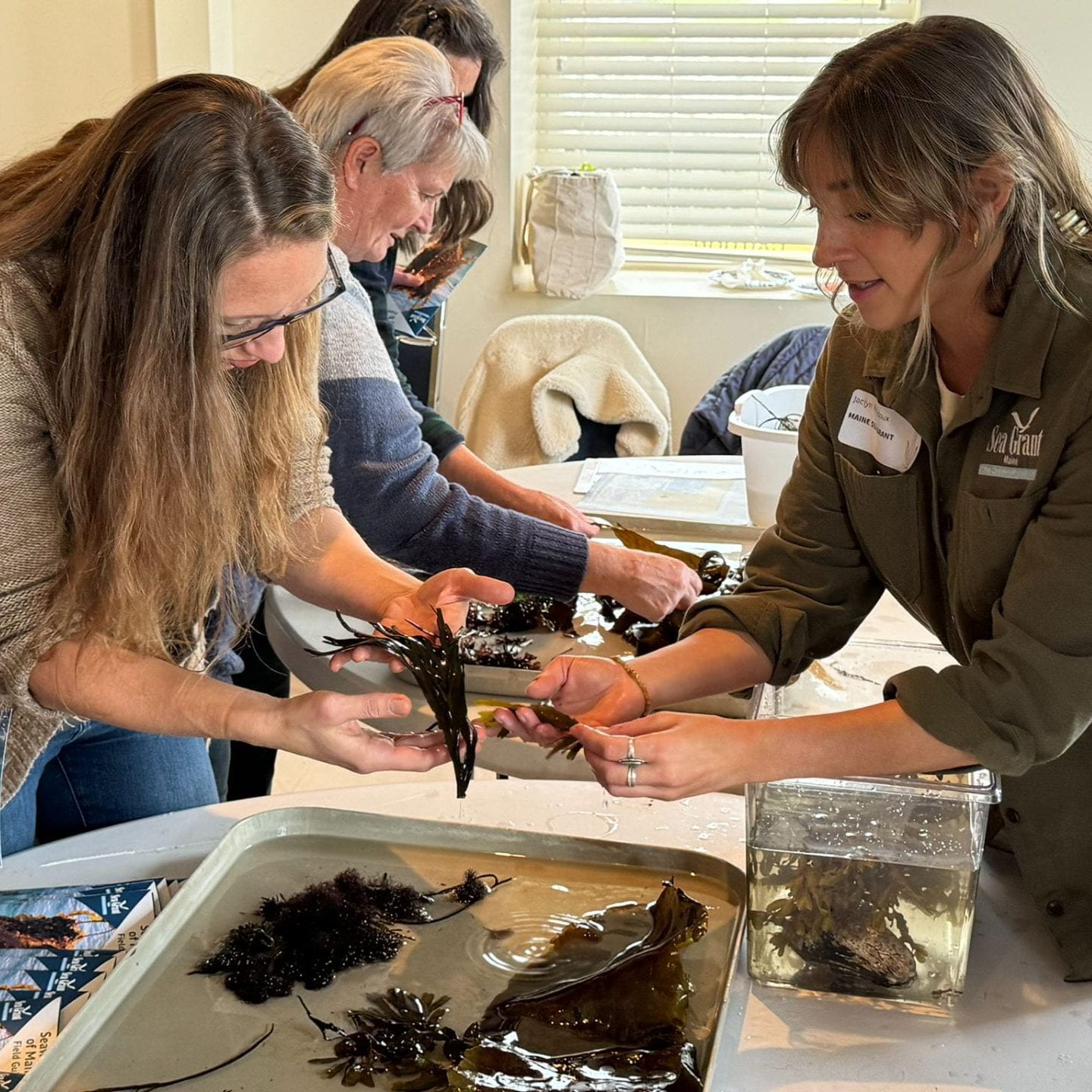
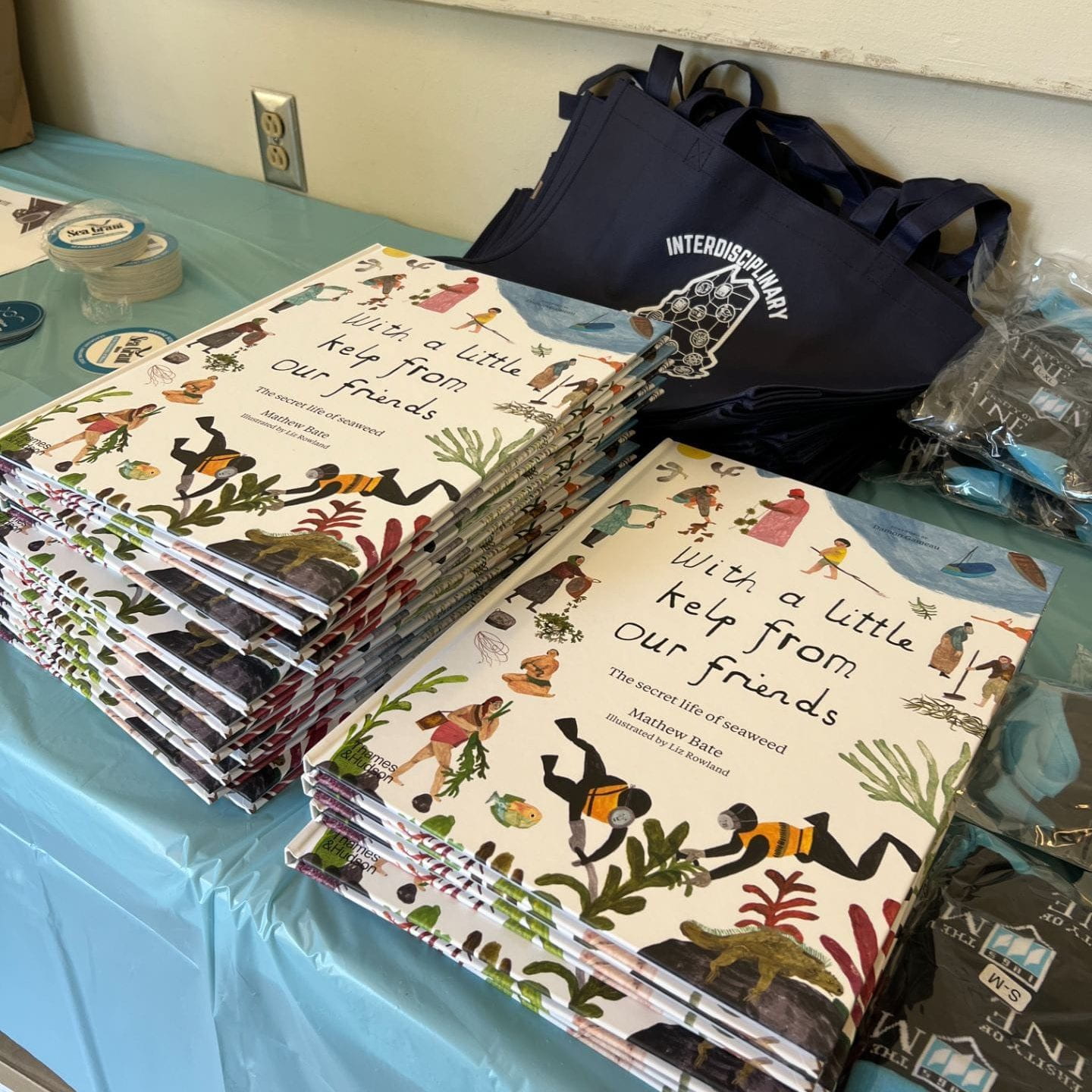
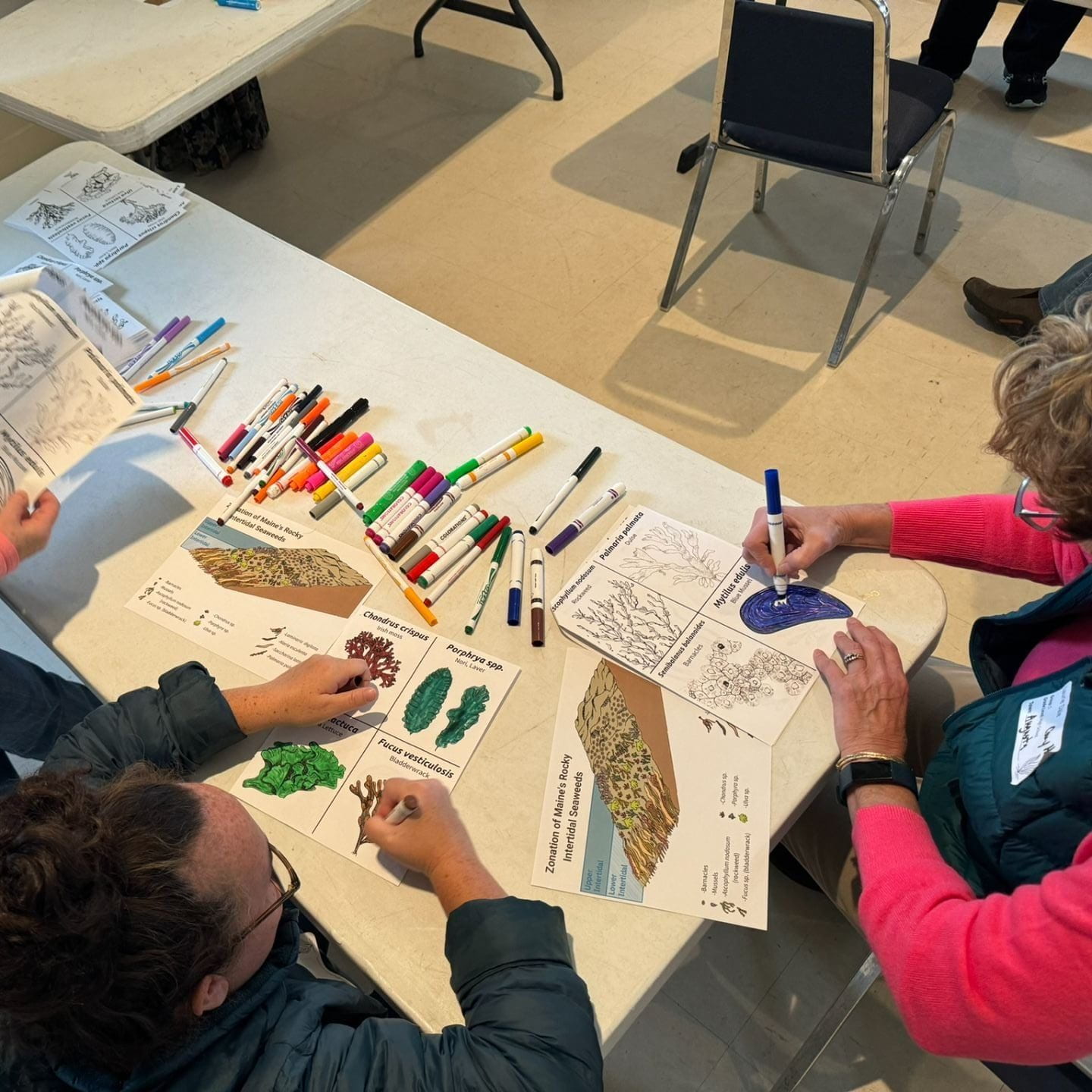
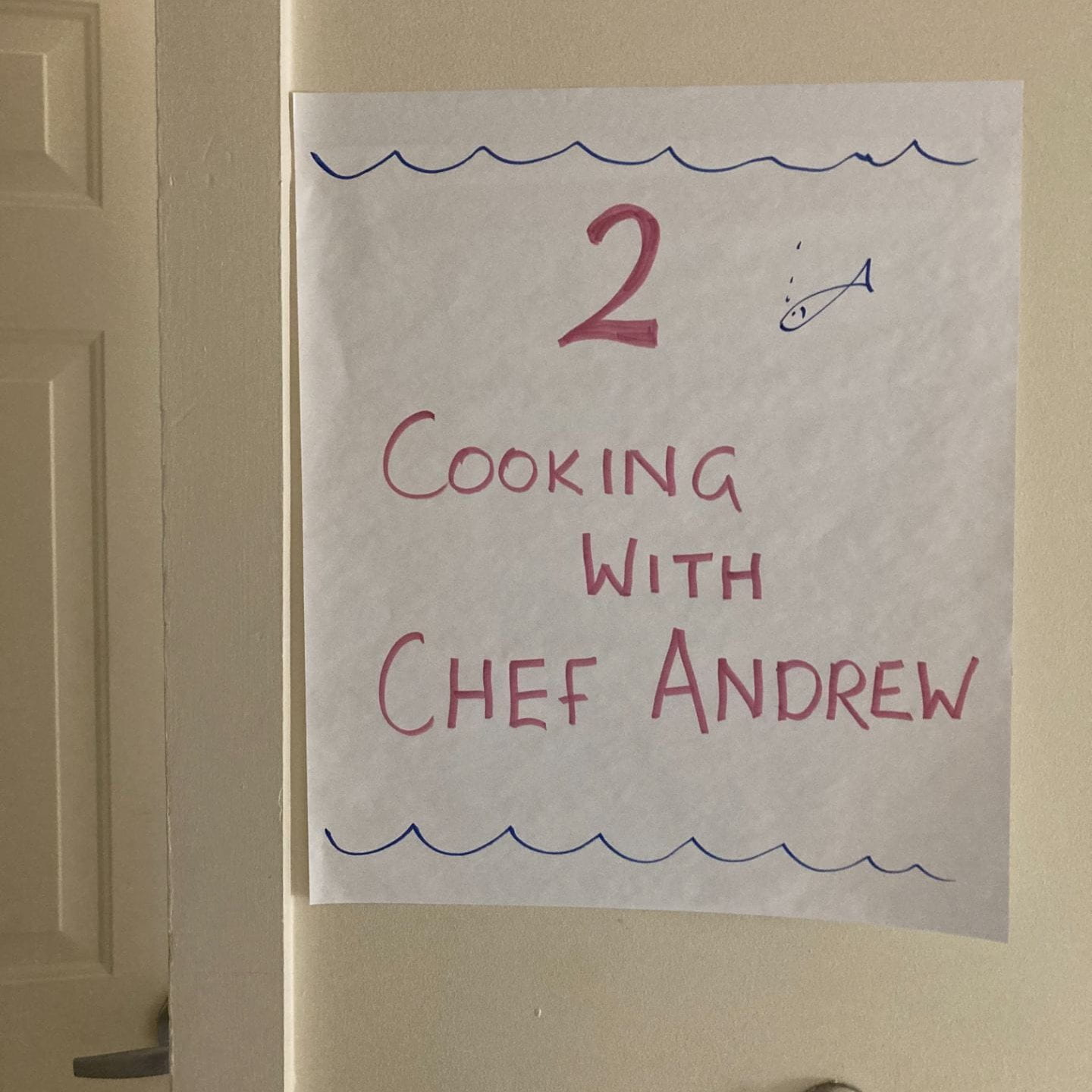
Let’s get started!
We want to empower YOU to teach your students about aquaculture.
In addition to providing hard copies of With a Little Kelp from Our Friends to Maine 4-6 educators, we have gathered, reviewed, and created resources to accompany key sections of the book. This seaweed curriculum is available to all educators and can be found below.
MAIC would like to specifically thank Maine Cooperative Extension: 4-H and Maine Agriculture in the Classroom for their key roles in developing and categorizing these resources.
For an introduction to seaweed aquaculture and this project, check out our webinar where we cover:
- the global context of seaweed aquaculture
- seaweed aquaculture in Maine
- seaweed education opportunies and project information
We also hear from a panel of profesionals in the seaweed world about their work bringing seaweed to Maine communities.

Seaweed Educational Materials for 5th & 6th Classrooms
We divided the book With a Little Kelp from Our Friends into 13 topic areas plus an introduction and a conclusion. Information, classroom activities, and resources for further research are gathered below.
Section 1: Introduction
↑ Learn about seaweed farming with the World Wildlife Fund (WWF) in this short video!
Easy to grow, versatile, and beneficial to ocean ecosystems, seaweed is a carbon-sequestering super plant. It can even be farmed as an efficient way to produce highly nutritious food for both humans and animals alike. If seaweed can be farmed at scale, there is potential for significant and meaningful impacts for people, nature, and climate.
About this Section: This section is an immersion into the world of Seaweed. It orients students to seaweed in Maine and how this industry mirrors themes found in With a Little Kelp From Our Friends.
Activities and Links:
About the Activity: The Skills Inventory (Pre-Assessment) is a google form educators can use with their students as a pre-assessment. It is designed to help educators guage the amount of learning gained through the use of this seaweed curriculum. The Word Wall is a document that can be printed and used as a visual for students as they work through these new concepts in the classroom.
‘Kelp’ Us Learn Video: Introducing the Maine Seaweed Industry, featuring Briana Warner (Atlantic Sea Farms), Jaclyn Robidoux (Maine Sea Grant), Morgan Fogg (Nautical Farms), and Jake Patryn (Nautical Farms).
Book Pages: 4-5
Section 2: Early Earth and Seaweed
About this Section: In the early days of life on earth, seaweed played an important role in helping to form the atmosphere and life on earth. This section talks about those early days and the evolution of seaweeds since.
Activity Name and Link: Seaweed Evolution Game
About the Activity: The Seaweed Evolution Game is an active classroom activity that gets students up and moving, engaged in a game that explores different phases of seaweed evolution.
‘Kelp’ Us Learn Video: Early Earth and Algae featuring Susan Brawley (University of Maine) and Jessie Muhlin (Maine Maritime Academy)
Book Pages: 6-11
Section 3: Seaweed Reproduction and Hatcheries
Activity Name and Link: Kelp Nursery Model
About the Activity: The Kelp Nursery Model activity asks students to think about the needs of a baby seaweed and how we can meet those needs in a hatchery setting. They will design their own hatchery system to meet those needs.
*This activity aligns with two NGSS standards:
- 5-LS1-1. Support an argument that ‘plants get the materials they need for growth chiefly from air and water.’
- 3-5-ETS1-1. Define a simple design problem reflecting a need or a want that includes specified criteria for success and constraints on materials, time, or cost.
‘Kelp’ Us Learn Video: Seaweed Reproduction and Hatcheries featuring Adam St. Gelais (Aquaculture Research Institute)
Book Pages: 12-13*
*We recommend that educators review these pages prior to sharing them with students and use their own discretion in lesson planning. The activities and video for this section are able to stand alone separately from the book pages.
Special Thanks: This activity heavily references Maine Sea Grant’s Kelp Nursery set up.
Section 4: Seaweed Biology
About this Section: To farm a complex organism like seaweed, we first need to understand how the organisms lives and grows. This section talks about seaweed biology and what these creatures need to grow happily in their environment.
Activity Name and Link: Seaweed vs. Plant Comparison
About the Activity: The Seaweed vs. Plant Comparison activity focuses on the ways in which seaweed anatomy and plant anatomy are similar and different.
‘Kelp’ Us Learn Video: From Cells to Ecosystems featuring Gretchen Grebe (Marine Biological Laboratory), Jaclyn Robidoux (Maine Sea Grant), and Carrie Byron (University of New England)
Book Pages: 14-17
Special Thanks: Activity courtesy of BioMara
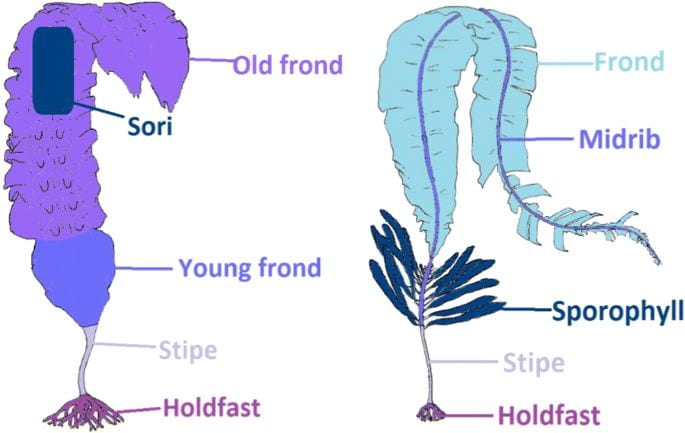
↑ A diagram showing two species of Maine kelp: sugar kelp (left) and winged kelp (right).
Image credit: Pétursdóttir et al. 2019
Section 5: Seaweed Ecology
↑Learn about the role of kelp in California kelp forest ecosystems with this video from 4Ocean!
Explore the incredible world of kelp forests, which are found in temperate and cold waters around the world. These large, brown seaweeds are more than just a pretty sight – they’re an essential part of the marine ecosystem, providing a home and food for a wide range of creatures. From sea otters to whales, from fish to crustaceans, the kelp forest is a bustling metropolis of underwater life.
About this Section: When we seaweed grows it forms part of a physical and biological environment known as an ecosystem. This section focuses on how seaweed fits into this environment, the organisms it interacts with, and the role it plays in the marine ecosystem.
Activity Name and Link: Kelp Forest Towers
About the Activity: The Kelp Forest Towers activity considers the concept of an ecosystem and examines the myriad factors that impact ecosystem health. Using an interactive, hands-on game students will explore how small changes can radiate through a larger system. They will also consider the roles humans can play to hurt or help ecosystem health.
*This activity aligns with the following NGSS standards:
- 5-LS2-1. Develop a model to describe the movement of matter among plants, animals, decomposers, and the environment.
‘Kelp’ Us Learn Video: From Cells to Ecosystems featuring Gretchen Grebe (Marine Biological Laboratory), Jaclyn Robidoux (Maine Sea Grant), and Carrie Byron (University of New England)
Book Pages: 18-21
Special Thanks: Activity courtesy of Maine Cooperative Extension: 4-H
Section 6: Let’s Eat Seaweed!
About this Section: Seaweed has been part of human diets around the world for thousands of years and provides an important source of nutrition to many people. The section explore the many ways we humans eat seaweed today, including ways we have had seaweed without even knowing it!
Activity Name and Link: Got Seaweed?
About the Activity: Got Seaweed? asks students to research foods they encounter regularly to determine if they contain seaweed and seaweed extracts.
‘Kelp’ Us Learn Video: Building a Seaweed World featuring Rob Dumas (University of Maine), Caitlin Hillery (UMaine), Seraphina Erhart (Maine Coast Sea Vegetables), and Colin Hepburn (Everything Seaweed)
Book Pages: 22-27
Special Thanks: Activity courtesy of Maine Cooperative Extension: 4-H
↑ Learn about health benefits of eating seaweed from experts in this short video from TIME!
Is seaweed healthy? Does it count as a vegetable? Are all kinds nutritionally the same?
Section 7: Diversity in the Seaweed Industry
↑Learn about seaweed farming with the Maine Aquaculture Association and Atlantic Sea Farms in this short video!
Lobsterman Keith Miller of Spruce Head, Maine, looks to diversify his business by farming kelp, a crop which runs countercyclical to the lobstering season. Keith has partnered with Atlantic Sea Farms (ASF), which provides his seed each fall and purchases his harvested kelp every spring. Atlantic Sea Farms turns freshly harvested kelp into delicious, fresh kelp foods. CEO Bri Warner discusses the important role aquaculture can play in diversifying our marine economy and sustaining traditional livelihoods along the coast of Maine.
About this Section: People from all different backgrounds work with seaweed all around the world! In Maine, we have a diverse industry and a rich, working waterfront history that strengthens both our communities and the seaweed sector.
Activity Name and Link: Seaweed Celebrity
About the Activity: The Seaweed Celebrity game encourages students to consider a variety of careers in the seaweed industry from research to farming to product development while interacting with peers.
‘Kelp’ Us Learn Video: Introducing the Maine Seaweed Industry, featuring Briana Warner (Atlantic Sea Farms), Jaclyn Robidoux (Maine Sea Grant), Morgan Fogg (Nautical Farms), and Jake Patryn (Nautical Farms).
Book Pages: 28-31
Special Thanks: Activity courtesy of Maine Cooperative Extension: 4-H
Section 8: Seaweed for Our Health
About this Section: Seaweed has many health benefits as a result of the micro and macronutrients in its tissue. This means that seaweeds are commonly used in natural remedies, cosmetics, and pharmaceutical products.
Activity Name and Link: Seaweed Face Mask
About the Activity: By makeing the Seaweed Face Mask students are able to try out some of the benefits of seaweed themselves and create something they can take home to share with their family.
Book Pages: 32-33
Special Thanks: Activity courtesy of With a Little Kelp from Our Friends
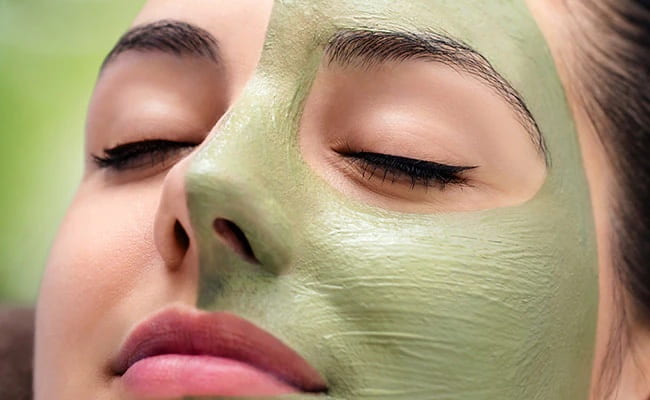
Section 9: Seaweed, Shipping, and the Sea
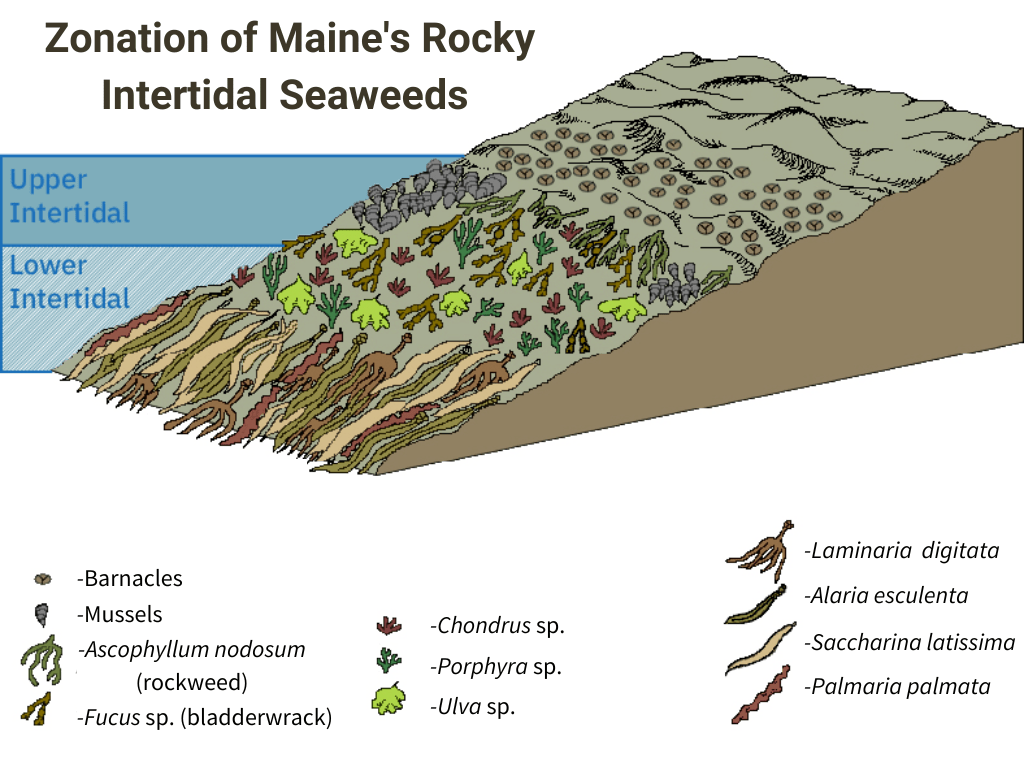
About this Section: When you think of seaweed, what comes to mind first? Many people think of seaweed as a slimy, somewhat erie tendril lurking in the intertidal zone. However, it is important to consider the beauty of seaweed and the role it has played in our history. When we think about seaweed in new ways, we realized it isn’t actually scary at all!
Activity Name and Link: Intertidal Mural and associated coloring pages
About the Activity: In this creative activity making an Intertidal Mural, students learn more about Maine seaweeds and where they grow while contributing to a fun classroom visual.
*This activity aligns with the following NGSS standards:
- 5-LS2-1. Develop a model to describe the movement of matter among plants, animals, decomposers, and the environment.
Book Pages: 34-35
Section 10: (STILL IN THE HATCHERY)
About this Section: THIS SECTION IS STILL IN THE HATCHERY PHASE! When we finish the materials, they will be posted here. Check back regularly for updates.
Activity Name and Link:
About the Activity:
‘Kelp’ Us Learn Video:
Book Pages:
Special Thanks:
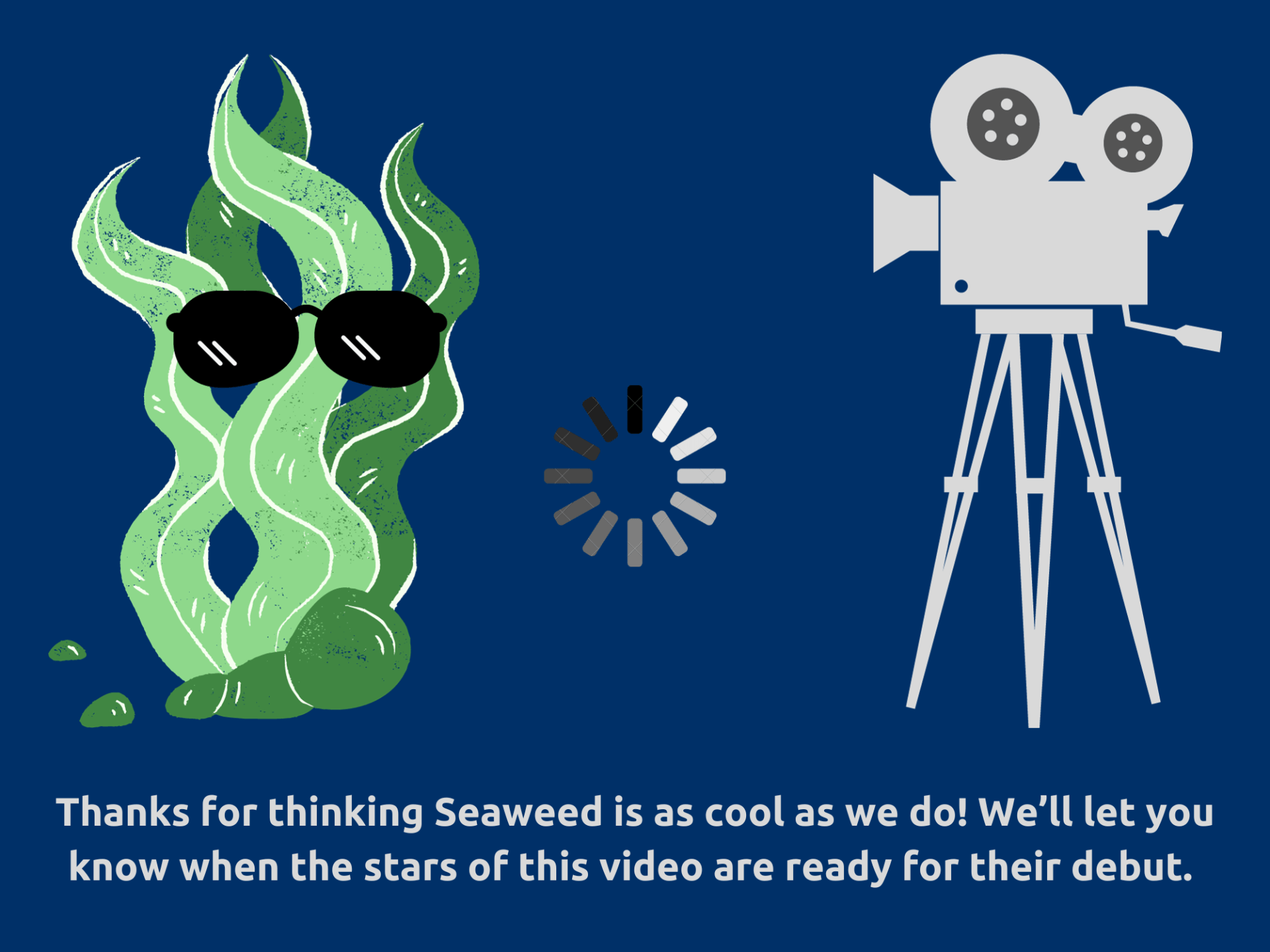
Section 11: Building a Seaweed World
↑ Learn about seaweed and bioplastics from Business Insider in this short video!
A California startup makes compostable replacements for thin-film plastic out of seaweed. The company sources raw materials from seaweed farms, which can provide habitat for sea life, combat ocean acidification, and create jobs.
About this Section: The idea of eating seaweed doesn’t appeal to everyone– afterall, seaweed can seem a bit slimy and salty. However, there are many people in the seaweed industry coming up with new and innovative ways to introduce seaweed to our lives, and not all of these ideas include making seaweed into food! Seaweed can also be used to make bioplastic, biofuel, textiles, and much more!
Activity Name and Link: Seaweed Products and Marketing
About the Activity: In the Seaweed Products and Marketing activity students get to try their hand at marketing seaweed products in a way that encourage other people to want to try them.
‘Kelp’ Us Learn Video: Building a Seaweed World featuring Rob Dumas (University of Maine), Caitlin Hillery (UMaine), Seraphina Erhart (Maine Coast Sea Vegetables), and Colin Hepburn (Everything Seaweed)
Book Pages: 38-39
Special Thanks: Activity courtesy of Maine Agriculture in the Classroom (MAITC)
Section 12: Seaweed and Cows
About this Section: Greenhouse gases like carbon dioxide and methane in our atmosphere trap sunlight and cause the planet to get warmer. Ruminant animals, like cows– which are farmed for meat and dairy products– release a lot of methane into the atmosphere through their burps. Seaweed has chemical properties that can help reduce these harmful emissions when fed to cows.
Activity Name and Link: Greenhouse Effect
About the Activity: The Greenhouse Effect activity explores how changes in atmospheric gas composition impacts the amount of heat retained in that atmosphere.
*This activity aligns with the following NGSS standards:
- 5-ESS3-1. Obtain and combine information about ways individual communities use science ideas to protect the earth’s resources and environment.
‘Kelp’ Us Learn Video: Seaweed & the Carbon Cycle featuring Nichole Price (Bigelow Laboratory for Ocean Science)
Book Pages: 40-41
Special Thanks: Activity courtesy of NASA
↑ Learn about seaweed and methane reduction with Bigelow Laboratory in this short video!
Bigelow Laboratory scientists are working to reduce methane emission by cattle – one of the largest human-caused sources of the greenhouse gas. The researchers are leading a team of partners from throughout the Northeast that hopes to use algae-based feed supplements to reduce cattle’s environmental impact.
Section 13: Seaweed, Ecosystem Services, and Climate Change
↑ Learn about seaweed farming and ecology with The Nature Conservancy in this short video!
Restorative aquaculture may be one of the best opportunities to simultaneously restore marine ecosystems and provide nutritious food for current and future populations. When done well and in the right places seaweed aquaculture can provide habitat, for fish and other animals to shelter, feed and reproduce. In partnership with the University of New England and University of Auckland, The Nature Conservancy is researching the role of seaweed aquaculture as habitat, and what drives this role so that restorative aquaculture can be developed in geographies across the world.
About this Section: We’ve talked a lot about the direct benefits that seaweed privides, but what about indirect benefits? Growing seaweed can have many positive impacts on the areas where it is grown, both for the environment and the surrounding communities. These benefits can be described as ‘ecosystem services’ or ‘positive externatities’ of seaweed farming.
Activity Name and Link: Go Fish for Seaweed
About the Activity: In the Go Fish for Seaweed activity students will learn to identify some Maine seaweeds then play an interactive game to reinforce this new knowledge.
‘Kelp’ Us Learn Video: From Cells to Ecosystems featuring Gretchen Grebe (Marine Biological Laboratory), Jaclyn Robidoux (Maine Sea Grant), and Carrie Byron (University of New England)
Book Pages: 42-51
Special Thanks: Activity courtesy of Maine Cooperative Extension: 4-H
← Check out SEAWEED: GROWING UNDERWATER FORESTS TO “KELP” OUR PLANET with Bailey Moritz from the World Wildlife Fund!
When we think about what lives in our oceans, we might overlook the thousands of species of plant-like seaweed that grow all over the world. One type of seaweed in particular, kelp, is excellent at creating habitat, cleaning our coasts, and serving as a healthy food. It’s also one of the fastest growing organisms on the planet! Just like we can grow our own broccoli and potatoes, farmers are growing seaweed to benefit the environment and their communities. Join Bailey Moritz, WWF seaweed expert, as she walks through the beautiful biology of seaweed and the hopeful solutions kelp farms can bring to the ocean.
For teaching materials that accompany this video (including warm-up and quiz questions, lesson plans, and resource links) visit the Conservation in the Classroom Archive and Resources page and download the free supplemental material packet: www.worldwildlife.org/pages/conservation-in-the-classroom-archive-and-resources
Conservation in the Classroom is a virtual livestream series that connects students with WWF experts and scientists. To sign up for notifications and join upcoming live events, visit www.wildclassroom.org/livestream
Section 14: Seaweed Aquaculture
About this Section: Now that we’ve learned so much about the many ways seaweed can be used in the human and natural world, let’s talk about seaweed farming! Growing seaweed via aquaculture can support communities economically while also providing ecological benefits.
Activity Name and Link: Aquaculture Equipment
About the Activity: In the Aquaculture Equipment activity students explore the equipments need to construct a seaweed farm and successfully cultivate seaweed.
*This activity aligns with the following NGSS standards:
- 5-ESS3-1. Obtain and combine information about ways individual communities use science ideas to protect the Earth’s resources and environment.
‘Kelp’ Us Learn Video: Introducing the Maine Seaweed Industry, featuring Briana Warner (Atlantic Sea Farms), Jaclyn Robidoux (Maine Sea Grant), Morgan Fogg (Nautical Farms), and Jake Patryn (Nautical Farms).
Book Pages: 52-54
Special Thanks: Activity courtesy of Maine Agriculture in the Classroom (MAITC)
↑ Hear a story of farming seaweed from Jake and Morgan at Nautical Farms in this short video!
Part of a series of short documentary films designed to share the stories of Maine’s sea farmers.
Section 15: Conclusion
↑ In Summary:
Reinforce learning themes about the potential capacity of seaweed farming with Scott Lindell from WHOI in this short TEDx video!
Current farming and fishing practices are having devastating impacts on our climate and environment. Scott Lindell, Research Specialist at The Woods Hole Oceanographic Institution, reveals how marine aquaculture can sustainably feed the world’s growing population. As US policies make it almost impossible to meaningfully develop fish, shellfish, and seaweed farms, he shows how simple changes to our diets and policies will drive this more sustainable future.
About this Section: We hope this seaweed curriculum inspires you and helps you to bring the ocean into your classroom! We are so grateful for the work you do to educate Maine youth, and hope this curriculum is just the beginning of your marine adventure.
Activity Name and Link: Skills Inventory (Post-assessment)
About the Activity: The Skills Inventory (Post-Assessment) is a google form educators can use with their students as a post-assessment . It is designed to help educators evaluate and gauge the amount of learning gained through the use of this seaweed curriculum.
Book Pages: 56-57
